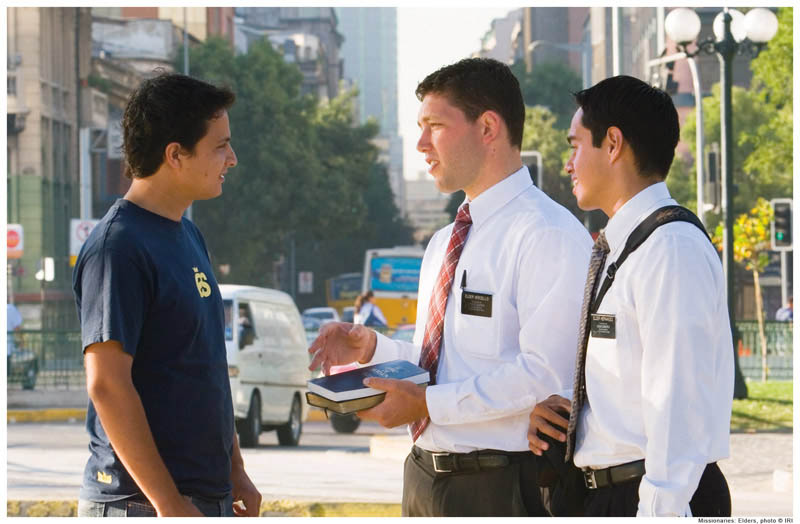With the baptism of Prince George, son of Prince William and Kate Middleton, baptisms may come back into fashion. According to the BBC, baptisms in the Church of England are declining, with just one in three being christened in 1980 and a little more than one in ten in 2011. Baptisms in general for people of all ages have dropped from 266,000 to 140,000 in the same time period. Catholic baptisms also declined by half between 1964 and 1977. The numbers have continued to drop, but at a lower rate, and are now at 60,000 baptisms per year. In the Church of England, which is the official church of the British royal family, many children are now being baptized when they are older. They are sometimes baptized with the next sibling to save cost or when they are old enough to remember the ceremony. (See Tom Heyden, 10 ways christening has changed, BBC News Magazine, 22 October 2013.)
Baptisms Declining
Deseret News reports that Baptist baptisms are at their lowest point since 1948, with just 314,959 in 2012. Mormons, a nickname for members of The Church of Jesus Christ of Latter-day Saints, are one of the few churches still experiencing growth in number of baptisms. They are reported to be the second fastest growing religion in America by the National Council of Churches, although the Mormons themselves do not make that comparison, noting that churches count their members in different ways. Membership in the Mormon faith recently reached 15 million people.
Deseret News notes that the decline most churches are facing comes from a general reduction in religious interest overall. Fewer people attend church or consider membership in a religion important, even if they consider themselves spiritual. (See Herb Scribner, Royal christening comes despite drop in baptisms, Deseret News, Oct. 23 2013.) In addition, more people are married outside of their own religion and so avoid baptizing a child into a church until the child is older and can make a personal decision. Fewer people are married in churches, making them less motivated to follow through with other sacraments.
Prince George’s baptism was carried out in a fairly traditional manner without a great deal of press and fanfare. Only family attended. He was dressed in an elegant white gown that was a replica of the one used by every royal infant since Edward VII. Six godparents were named and parental advice was offered by officiating clergy. The infant is three months old.
Do Mormons Baptize Infants?
Mormons do not baptize infants, but they do give newborns a name and a blessing in a brief ceremony held at the start of regular church services (in most cases). This is normally done within a few months of the child’s birth. An authorized Melchizedek priesthood holder acts as voice (speaks the blessing) and other priesthood holders are invited to participate. The men stand in a circle holding the baby with one hand and placing their hands on the shoulder of the man next to them while another priesthood holder, usually a teenage boy, holds the microphone. The Mormons have a lay ministry and any worthy man who is eighteen or older can hold this priesthood. Because of this lay priesthood, babies are often blessed by their own fathers or grandfathers.
The child is given an official name that will be entered in the church records and is the same name used in legal records. Then the priesthood holder gives the child a blessing as inspired by the Holy Ghost and closes in the name of Jesus Christ. Generally, the father or person speaking the blessing will hold the baby up so members can see the infant, although this is not required.
Mormon Baptisms at Age Eight
Baptisms are not performed until the child is eight years old. This is when Mormons teach that children become accountable for their sins. Until that time, Satan has no control over them and the mistakes they make are just that—mistakes of a child who is still learning right from wrong.
Mormons believe the atonement of Jesus Christ covers the sins of Adam and Eve and also the mistakes of young children. There is, therefore, no risk to a child who dies before age eight, and he or she returns home to God as pure as when the child was first born. This information is extremely reassuring to parents whose child dies very young—sometimes even before baptism would have been possible.
For Mormons, the innocence of young children is further proof of the love and fairness of God. He knows where and when each child is born and knows even before the child is born whether or not the parents will have him baptized. It would be extremely partial of God to intentionally place one of his beloved children into a setting in which he can receive a baptism and another into a setting in which he cannot.
In many religions, a child who happens to die before the baptism can occur is considered unable to be saved. This would mean he is punished for a situation over which he has no control, and that would be unjust. God is never unjust.
What Happens to an Unbaptized Child Who Dies?
While some faiths, struggling to explain their view, suggest that perhaps because God knew the child would never have chosen baptism anyway, it didn’t matter where he was sent in mortality. However, Mormons believe that God did not send anyone to earth to fail. Even though He does indeed know everything, He loves us and wants us to succeed. He longs for us to make the right choices in life. As a result, he gives us the opportunity to do that. Even those who die without having received a proper witness from the Holy Ghost after age eight will have the opportunity to accept or reject the gospel of Jesus Christ after death.
If a Mormon child reaches age eight and his parents choose not to have him baptized, the child is not held accountable. We are accountable only for those things we can control. The parents will be held accountable for their choice, and the child is accountable only for those things he knows and is free to do.
Mormon baptisms are done by immersion, as was the baptism of Jesus Christ. They are performed by a priesthood holder—often a relative of the child—who immerses the child entirely under water for a moment after saying the baptismal prayer. Following the baptism, the child changes out of the white baptismal clothing and into dress clothing. He or she is then confirmed a member of the Church and can receive the gift of the Holy Ghost by the laying on of hands.
How Mormons Prepare Children for Baptism
Preparation for baptism begins when a child is very young. Children learn to pray in their families and participate in family scripture study. Each week, the family holds a weekly Family Home Evening as well, in which a brief gospel message is presented, followed by family activities.
Children also learn the gospel in their church classes, which begin with “nursery” at eighteen months. In increasingly challenging classes, they learn everything an older convert would be taught. They also learn how to pray to know whether or not the Church is true and whether or not God wants them to be baptized. They are taught to do this before their baptisms, and while they might seem very young to receive such an answer, Mormons have faith in their children—as does God. They are also encouraged to pray for a testimony of Christ as needed throughout their lives. Mormons believe baptisms must be performed of a person’s free will after receiving confirmation from God that it is the right thing to do.
While Mormons do not perform infant baptisms, they often attend the ceremonies of friends of other faiths. They don’t normally assign godparents to their children but many do serve as godparents for children of other faiths. There is no opposition to this; it simply isn’t part of their tradition.
Mormons, like people of many faiths, were very interested in the infant prince’s baptism and appreciated the family’s desire to keep it a spiritual and essentially private event. For Mormons, baptisms of any faith are sacred events to be honored and cherished.
About Terrie Lynn Bittner
The late Terrie Lynn Bittner—beloved wife, mother, grandmother, and friend—was the author of two homeschooling books and numerous articles, including several that appeared in Latter-day Saint magazines. She became a member of the Church at the age of 17 and began sharing her faith online in 1992.





